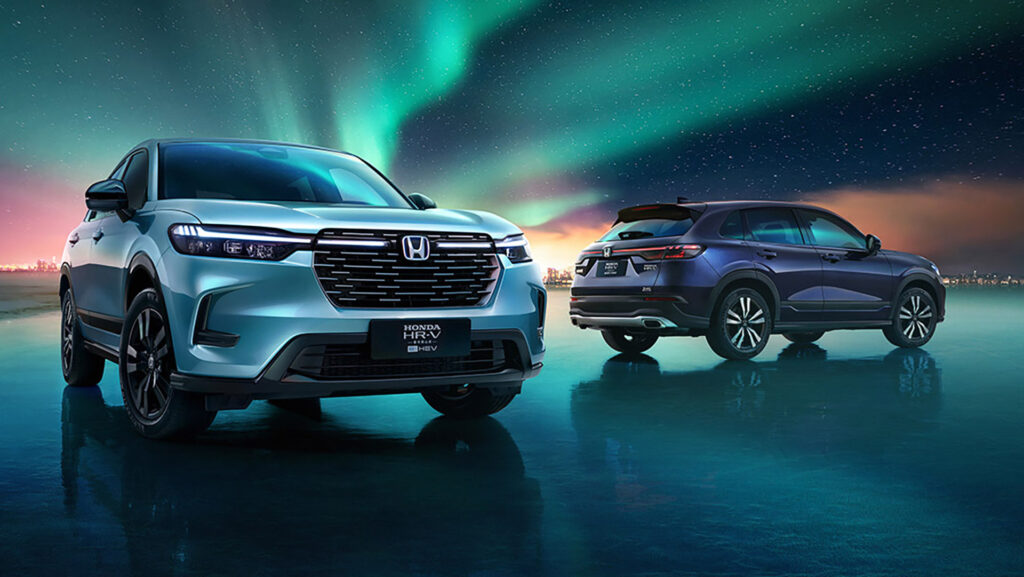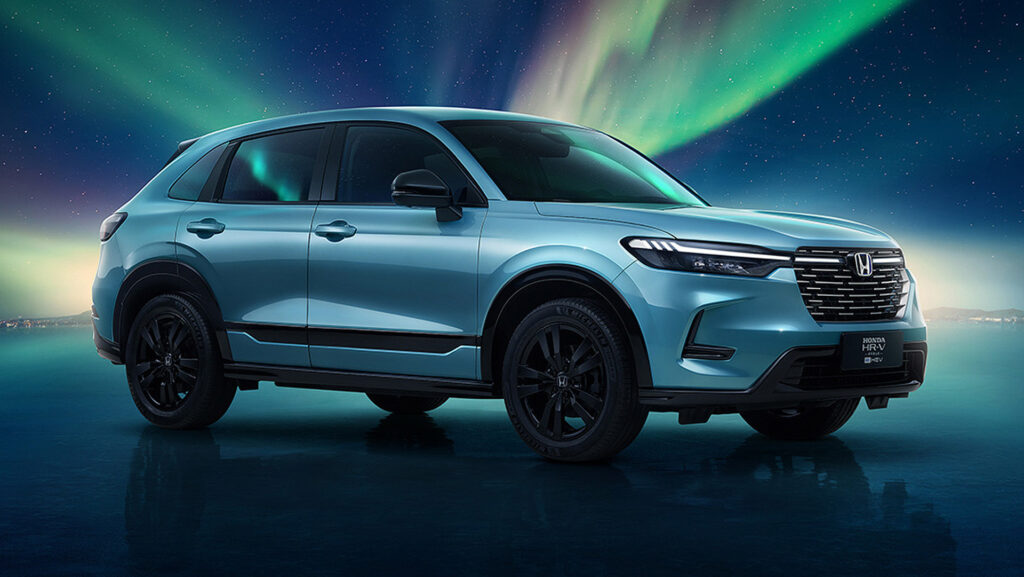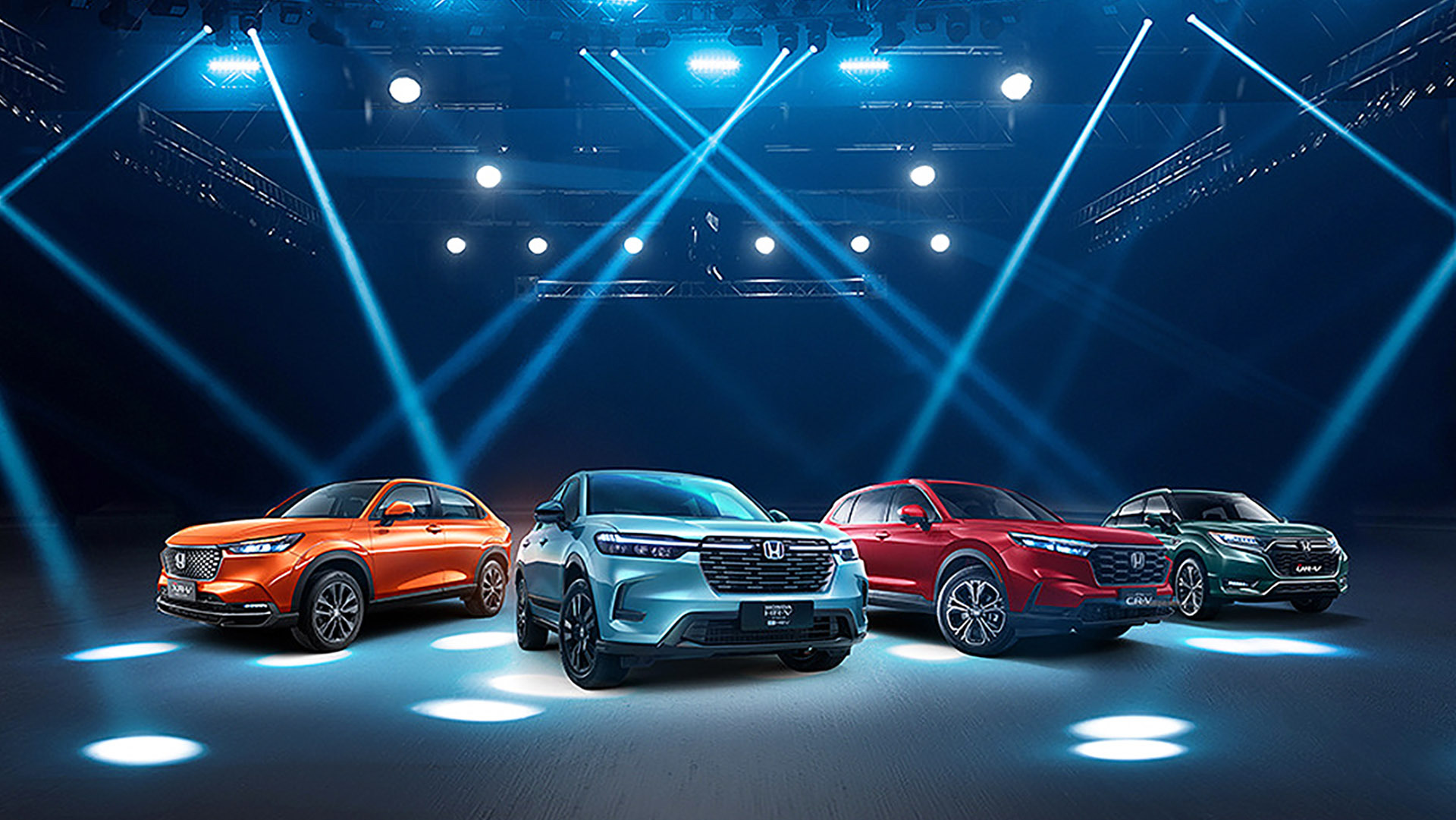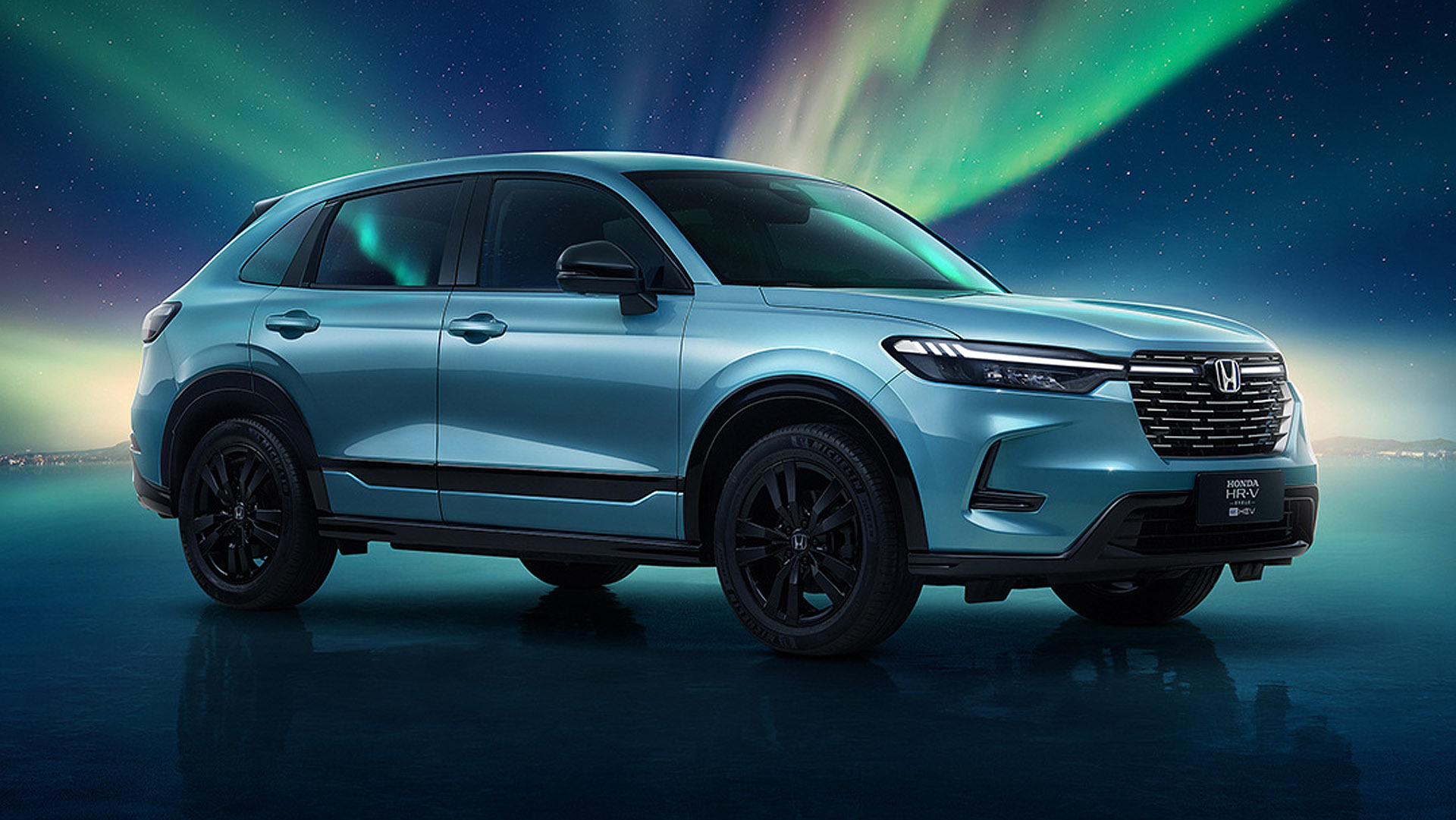The HR-V nameplate is quite popular in many parts of the world, which is why Honda continues to use it. Notably, each market has its own version of the HR-V, as a third one has just been revealed by Dongfeng Honda in China.
The third-gen Honda HR-V saga started in 2021 with the debut of the global model which is currently on sale in various markets including Europe and Japan (Vezel). Then came another new HR-V for North America, which then became the ZR-V for Europe and China. And finally, the Chinese-spec Dongfeng Honda HR-V you’re seeing here is a new model and a sibling to Guangqi Honda’s ZR-V.
Read: The 2022 Honda HR-V e:HEV Is A Premium-Looking But Pricey SUV

The styling of the Chinese-spec HR-V is typical of Honda SUVs with a large grille at the front and thin bumper intakes similar to the larger CR-V. The LED graphics on the headlights are somehow reminiscent of Volvo, although in the Honda they extend inside the grille through illuminated strips. The greenhouse and the profile are quite familiar as they are nearly identical to the North American HR-V and the Global ZR-V, minus the slightly different side sills featuring black trim pieces. The rear end is also similar to the aforementioned SUVs but features unique full-width taillight clusters and wider reflectors on the bumper which also houses dual trapezoidal tailpipes.
We don’t have photos of the interior but it is most likely carried over from its siblings, with small changes in the trim and color combinations. Honda has yet to announce the technical specifications of the new SUV but confirmed that it comes fitted with a hybrid powertrain, hence the e:HEV badge. To mix things up in your head just a little bit more, Dongfeng Honda’s SUV lineup also includes the slightly smaller XR-V and the fully electric E:NS1, which are essentially Chinese versions of the global HR-V.
For those not familiar with the regulations in China, foreign automakers are required to form two joint ventures with local companies in order to be allowed to produce and sell vehicles locally. This is why we often see different model variations from major automakers like Honda, Toyota, and Volkswagen in what is currently the largest car market in the world.








